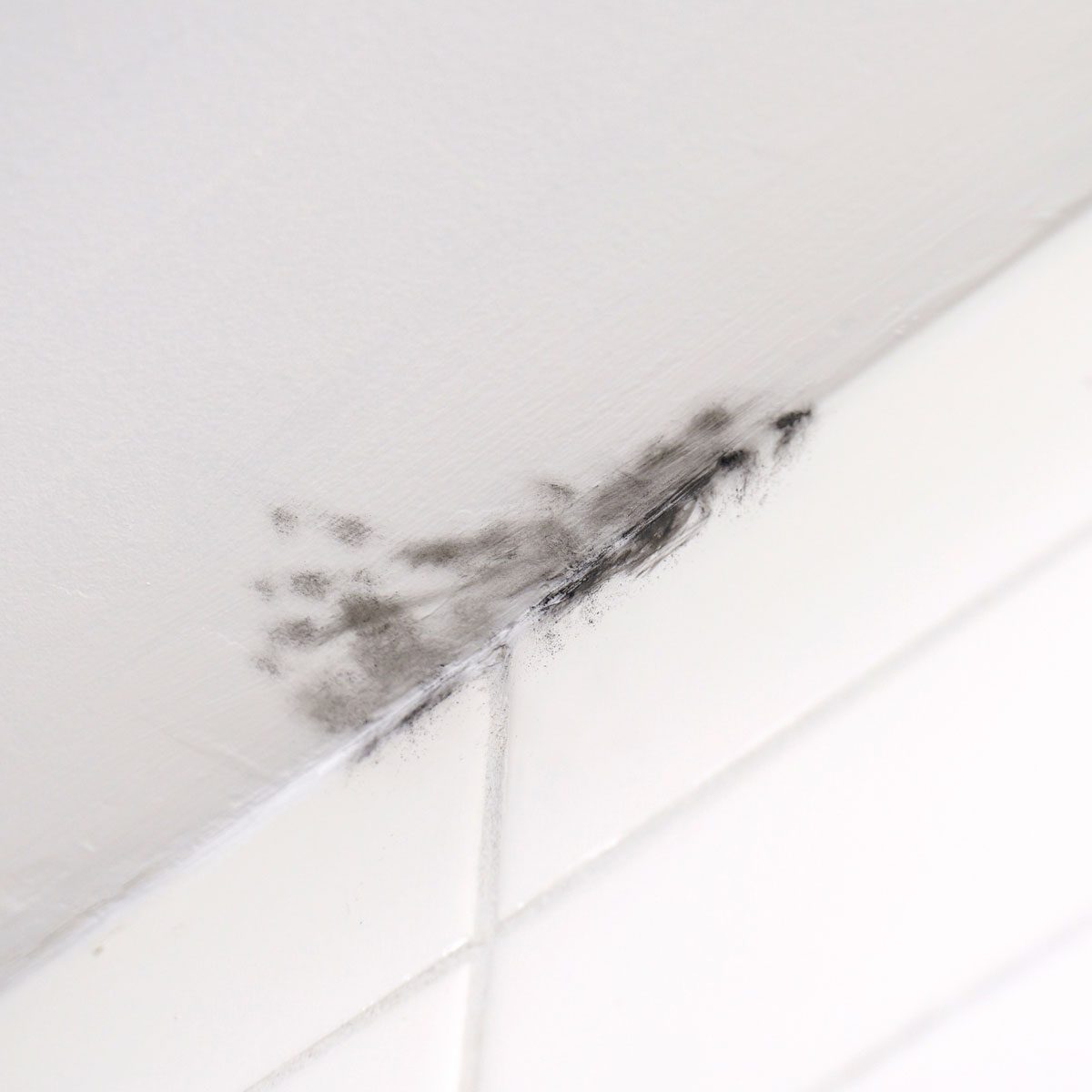Here's how to clean mold from a bathroom ceiling so it never comes back.
A half day
Beginner
$10 - $40
Introduction
Wondering how to remove mold from a bathroom ceiling? Follow these simple steps to eliminate mold for good.
Mold has an amazing way of showing up in bathrooms, basements and around or behind baseboards. The bottom line is that mold spores are found in every household. However, mold can’t grow if moisture is eliminated.
You can’t and won’t ever be able to control mold if moisture levels are not controlled and if the mold has penetrated an organic surface and started to decompose it. This could be surfaces such as drywall, masonry, or wood. The other challenge is mold is everywhere, AND there are many, many types of common molds.
The good news is that if a surface has been painted and mold has not found its way below the surface and into organic matter, mold can be removed. It is a very fine line, but it is possible.
The single most common place to find mold in a home is a poorly ventilated bathroom. With every shower, mold is fed the main ingredient it needs to grow—moisture. Seeing black spots appear on your ceiling is a telltale sign you need a more effective fan or ventilation system to help rid the moisture faster so the mold doesn’t have an opportunity to grow. Mold can only be removed from a bathroom ceiling IF it hasn’t penetrated below the surface of the paint and into the actual drywall.
When to call a pro
In the event that the mold is widespread, larger than a 10-square foot area, or has penetrated the surface of the paint into the drywall, insulation, or framing, it is advisable to consult a mold abatement specialist to remove any exposed or damaged areas.
Safety considerations
When dealing with mold, whether it be removing it from a ceiling or even doing a DIY mold test, be sure to protect yourself. Mold spores are very small and easily airborne, and you don’t want to breathe them in. Always wear safety glasses, a respiratory mask and plastic gloves when dealing with mold.
Here are the steps to help clean up mold and keep it under control.
Tools Required
- Painting supplies
- Plastic gloves
- Respiratory mask
- Safety glasses
- Small bucket
- Spray Bottle
Materials Required
- Clean towels
- Hydrogen peroxide
- Primer
- semi-gloss paint
- Vinegar
Project step-by-step (3)
Clean mold with vinegar
Start by saturating the mold with distilled white vinegar or cleaning vinegar. You can mix a vinegar and water solution if the smell bothers you, but I would not advise diluting more than 1:1. Let it soak for a few minutes and begin wiping it away. Avoid rubbing the mold around; you want to wipe it off as much as possible. With each wipe, fold the cloth over to maintain a clean area to avoid spreading mold. If you have a particularly stubborn spot, apply another round of vinegar or hydrogen peroxide directly from a spray bottle. Let it sit for a few more minutes, and wipe it down again. Replace the vinegar and water solution often if it gets dirty.
When you have removed all the surface mold from your bathroom ceiling, wipe down the ceiling and surrounding areas. Throw away all the towels used to clean the mold. Allow the area to dry completely.

Apply primer
Once the area has completely dried, apply two coats of primer. Mold stains are hard to cover, so the second coat of primer is necessary.

Apply paint
Once the primer has fully dried and you are satisfied with the stain coverage, apply at least two coats of paint. Semi-gloss is the recommended paint finish for bathroom ceilings.
Pro Tip: Pool paint works great for bathroom walls and ceilings – it is mildew and mold-resistant and designed to live in moisture, sealing the organic material out and preventing mold from finding a place to live.

FAQ
What can I do to minimize mold in my home?
In order to prevent mold growth in your home, keep your home well-ventilated with fans of appropriate sizes in the bathrooms and open your curtains to allow the sunlight to shine through. Make sure you are aware of any water leaks or water damage to your ceiling, and repair it as soon as possible. To deter mold, occasionally spray your bathroom ceiling with mold removal spray.
Is vinegar or bleach better for mold on ceilings?
For ceiling mold removal, vinegar kills mold more effectively than bleach. Unlike bleach, which only treats the surface and contains water that can promote regrowth, vinegar’s high acidity destroys mold down to its roots, especially on porous surfaces like drywall.





















